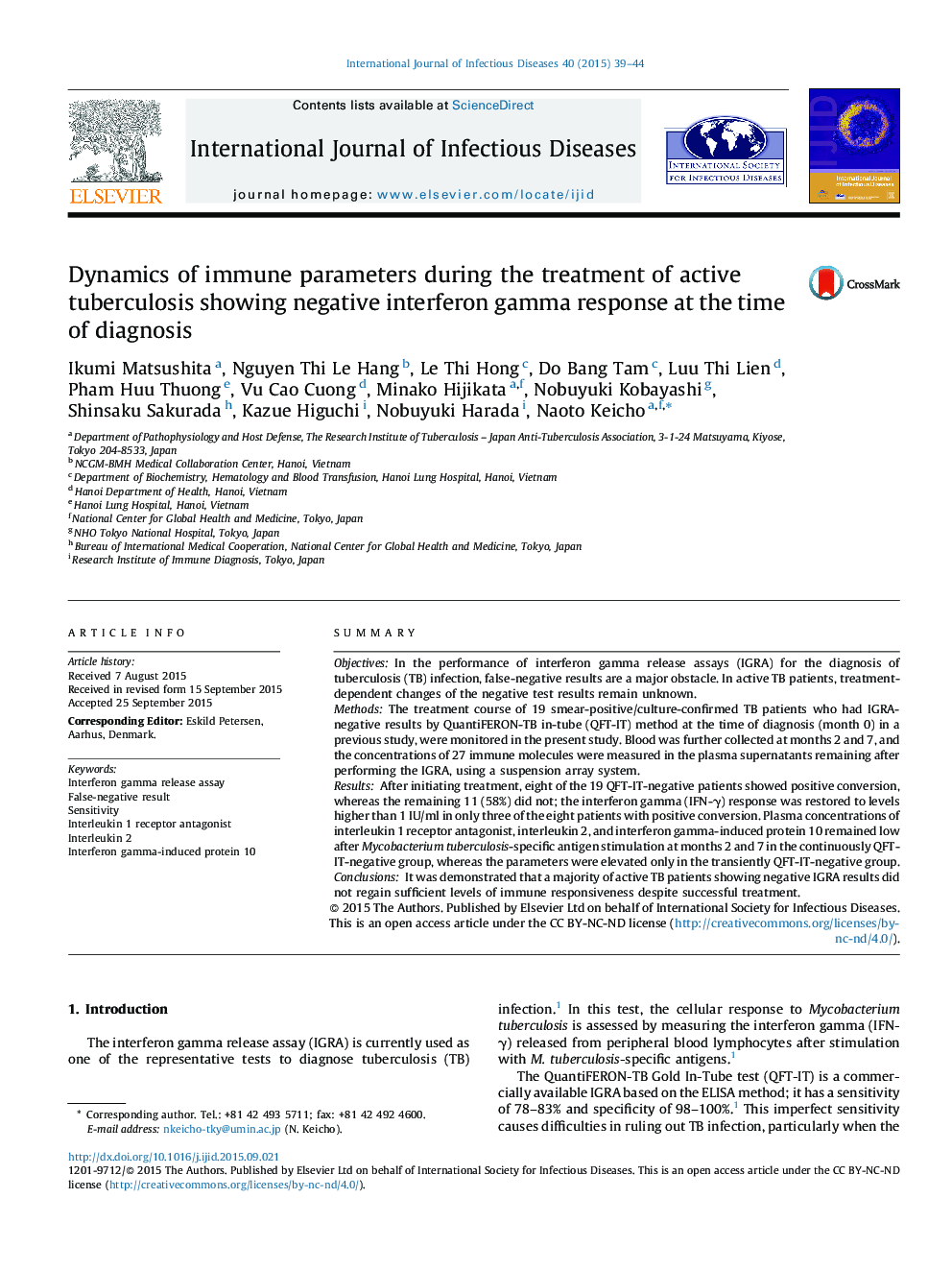| Article ID | Journal | Published Year | Pages | File Type |
|---|---|---|---|---|
| 3361961 | International Journal of Infectious Diseases | 2015 | 6 Pages |
•Most of the interferon gamma release assay (IGRA)-negative results remained negative during the course of tuberculosis (TB) treatment.•Interferon gamma responsiveness was low in these patients even after successful TB treatment.•The induction levels of other immune parameters were also low in these patients.
SummaryObjectivesIn the performance of interferon gamma release assays (IGRA) for the diagnosis of tuberculosis (TB) infection, false-negative results are a major obstacle. In active TB patients, treatment-dependent changes of the negative test results remain unknown.MethodsThe treatment course of 19 smear-positive/culture-confirmed TB patients who had IGRA-negative results by QuantiFERON-TB in-tube (QFT-IT) method at the time of diagnosis (month 0) in a previous study, were monitored in the present study. Blood was further collected at months 2 and 7, and the concentrations of 27 immune molecules were measured in the plasma supernatants remaining after performing the IGRA, using a suspension array system.ResultsAfter initiating treatment, eight of the 19 QFT-IT-negative patients showed positive conversion, whereas the remaining 11 (58%) did not; the interferon gamma (IFN-γ) response was restored to levels higher than 1 IU/ml in only three of the eight patients with positive conversion. Plasma concentrations of interleukin 1 receptor antagonist, interleukin 2, and interferon gamma-induced protein 10 remained low after Mycobacterium tuberculosis-specific antigen stimulation at months 2 and 7 in the continuously QFT-IT-negative group, whereas the parameters were elevated only in the transiently QFT-IT-negative group.ConclusionsIt was demonstrated that a majority of active TB patients showing negative IGRA results did not regain sufficient levels of immune responsiveness despite successful treatment.
